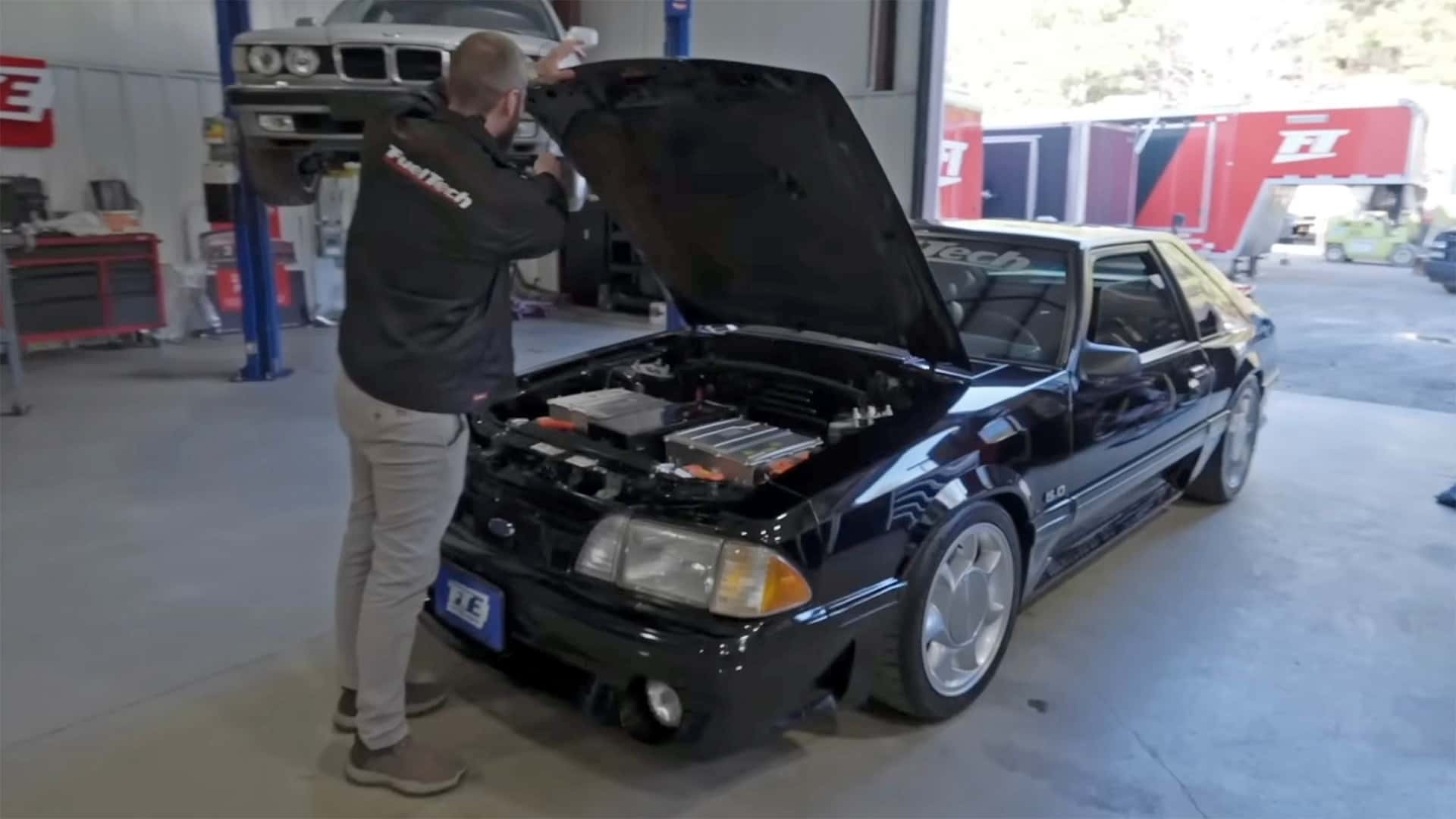Electric Fox: Ford Mustang's Manual-Shift Electric Revival

Unlike typical electric vehicle conversions that use repurposed Tesla drivetrains, this particular conversion relies solely on after-market components.
- In the early 1990s, a Ford Mustang Foxbody had its gasoline engine swapped out for an electric motor but kept its original five-speed manual transmission.
- It has become more than double the power it initially had, and unlike most electric vehicle conversions, this one is also slightly lighter.
- This electric vehicle conversion utilized entirely new aftermarket components, hence there isn’t a refurbished Tesla engine beneath its hood.
Modifying vintage automobiles to operate on electric power is a sensitive subject among traditionalist aficionados, as they prefer maintaining these vehicles' authenticity with their original internal combustion engines. However, even though you might disagree with every conversion of classic cars into electric versions, certain transformations prove to be more practical than others, such conversions being quite contentious. This early 1990s Fox-body Ford Mustang might be one of them.
The term denotes the third-generation Mustang constructed using what’s known as the "Fox platform." This architecture supported over a dozen rear-wheel-drive vehicles from Ford, Lincoln, and Mercury. The Mustang in question hit the market in 1978 and stayed in production up until 1993. It significantly outpaced its smaller, less powerful predecessor—the second generation—in terms of popularity.
However, similar to many performance cars from that time period, it would not meet contemporary speed standards. Without either the 5.0-liter V8 or the 2.3-liter turbocharged four-cylinder engine in your Fox Mustang, achieving a 0-to-60 mph acceleration typically took more than 10 seconds. Even so, the V8 took approximately 7.5 seconds to accelerate the car to 60 mph; this time was reduced to about six seconds after the introduction of electronic fuel injection increased the engine's power output to 225 horsepower.
This might be why the fact that the low-mileage, single-owner Mustang was converted to electric power by FuelTech in Georgia isn’t such a significant issue.
The main aspects of this specific transformation are highlighted in a video posted by The Racing Channel The original manual transmission, which you wouldn't need in an electric vehicle, nevertheless enhances the driving experience without adding extra weight compared to the standard model.
Even though in an EV conversion When you remove the bulky engine, you typically end up making the vehicle heavier due to added battery packs. However, this particular conversion is about 50 pounds lighter compared to the standard model, which is quite remarkable. With an output of 500 horsepower and more than 700 pound-feet of torque, it will likely feel as fast as a spacecraft.
The current transmission might not survive under such high torque conditions since it wasn’t built for that kind of power, yet the constructors intend to maintain a manual setup. Therefore, they’ll most likely replace it with a new gearbox once this one inevitably gives out.
The weight distribution across the two axles was maintained evenly by dividing the battery pack (with an undisclosed capacity). Approximately half of it is positioned beneath the hood, surrounding the drivetrain, inverter, and various electronic components, with the remaining portion placed at the rear.
During their drives, the most peculiar aspect of operating this vehicle involves changing gears. The process mirrors what one would experience with a conventional internal combustion engine car, complete with audible changes in the motor’s revolutions per minute and subtle vibrations from the clutch engagement during gear shifts. If I were driving this car, I might utilize the clutch more frequently simply due to the option being available. This approach likely surpasses systems featuring artificial gear sensations and imitation engine sounds employed by certain automakers.
While EVs don’t need a manual transmission Since these vehicles offer substantial torque even at almost zero revolutions per minute, having one with interchangeable gears becomes particularly appealing for enthusiastic drivers. If you prefer not to shift frequently, you can keep it in second or third gear because it provides ample torque to launch the vehicle efficiently without needing to start in first gear.
The most impressive aspect is that you don’t need to use the clutch to separate the motor from the transmission because the electric motor’s revolutions per minute drop to zero upon stopping. We believe there’s significant potential for such modifications, particularly as this approach is notably straightforward—you can retain the original transmission, driveshaft, differential, axles, and all standard suspension parts.
Would you transform an antique item to function with electric power like this example? Share your thoughts in the comments section.
More EV-Swapped Classics
- The Initial Mazda Miata Functions Well When Converted Into an Electric Vehicle
- Electric-Vehicle-Converted 1928 Ford Model A Pickup: A Prohibition-Era Electric Truck
- This Tesla Plaid-Driven Cobra Is Ridiculously Fast
- Audi's Electrified A2 Restomod Is More Sensible Than It Seems
- Transforming This Mercury Comet Wagon Into an Electric Vehicle Should Cost Less Than $4,000
- A Vintage Jeep EV Transformation Makes for an Ideal Father-Son Project. It’s Also Inexpensive.

Post a Comment for "Electric Fox: Ford Mustang's Manual-Shift Electric Revival"